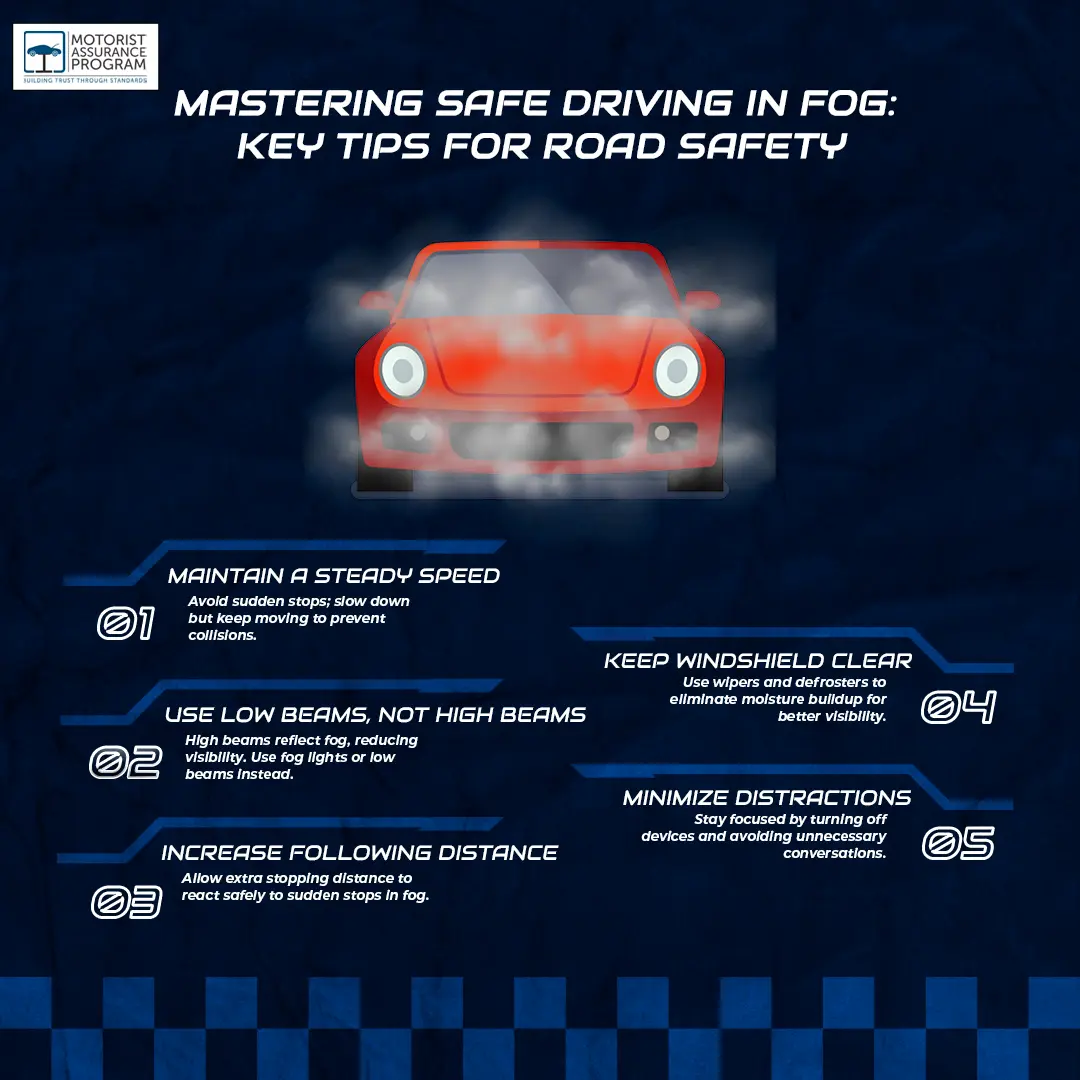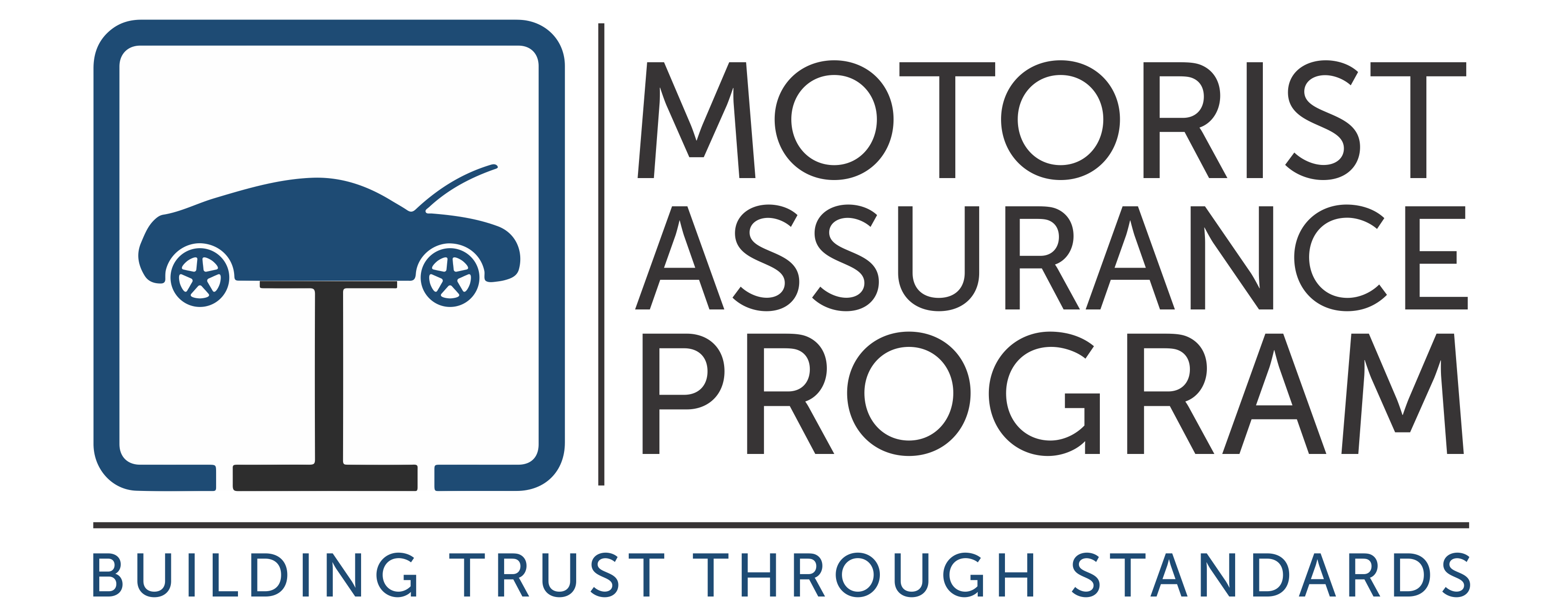To drive in foggy conditions safely, slow down and keep moving at a steady pace. Leave extra stopping distance between you and the vehicle ahead. Use fog lights or low beams for better visibility. Follow road lines closely and keep your windshield clear with wipers and defrosters. Eliminate distractions like phones or loud music. If visibility worsens, pull over and turn on your hazards. There’s more to learn about traversing fog safely.

Key Takeaways
- Maintain a steady pace and slow down to adapt to reduced visibility; avoid stopping completely.
- Use low-beam headlights and fog lights when visibility drops below 100 meters.
- Increase your following distance to allow for extra reaction time and unexpected stops.
- Keep your windshield clear with wipers and defrosters to enhance visibility.
- Eliminate distractions by focusing on the road and minimizing conversations while driving.
Slow down, but keep moving
Although fog can drastically reduce visibility, it’s important to keep moving at a safe speed rather than coming to a complete stop on the road. When you’re driving in foggy conditions, slow down but maintain a steady pace to prevent accidents. Use your low-beam headlights, as high beams can reflect off the fog and impair your vision. Keep an eye on the road lines, and don’t rely solely on GPS, as it may not account for foggy conditions. Remember, these foggy driving tips are vital for safe driving in foggy conditions. If you feel uncertain, find a safe spot to pull over until visibility improves. Staying aware and cautious will help you navigate through the fog safely.
Leave extra stopping distance
When driving in fog, it’s essential to leave extra stopping distance between you and the vehicle ahead. Visibility can drop markedly, making it harder to judge how much space you actually need. By increasing that distance, you allow yourself more time to react in case the vehicle in front of you suddenly stops. A good rule of thumb is to double your usual following distance. This not only helps you maintain control but also enhances your ability to drive safely in dense fog. Remember, safe driving during foggy weather means being prepared for the unexpected, so don’t hesitate to adjust your distance. Staying calm and patient will contribute to a safer driving experience for you and others on the road.
Use fog lights or low beam lights
Using fog lights or low beam lights is essential for safe driving in foggy conditions. High beams can actually reflect off the fog, reducing visibility. Instead, you should rely on fog lights or low beams to cut through the mist. Here’s how to drive safely in fog:
For safe driving in fog, use fog lights or low beams to enhance visibility and avoid high beams, which can worsen conditions.
- Activate Fog Lights: Use your fog lights when visibility drops below 100 meters.
- Use Low Beams: If you don’t have fog lights, switch to low beams. They’re designed for better visibility in adverse weather.
- Combine with Wipers: Keep your windshield wipers on to maintain a clear view while driving in fog.
Follow the road lines with your eyes
As you navigate through foggy conditions, keeping your eyes on the road lines can significantly enhance your safety. When visibility is low, road lines serve as vital guides, helping you maintain your lane and track your position. Focus on the solid and dashed lines, as they’re designed to direct you through challenging weather. By doing this, you’ll reduce the risk of veering off course. Remember, in foggy driving conditions, it’s easy to get disoriented, so avoid distractions and keep your attention fixed on these markers. This simple technique is essential for knowing how to drive safely in the fog. Prioritize your safety by using the road lines as your visual anchor, ensuring a more secure journey.
Use windshield wipers and defrosters to reduce moisture
Maintaining clear visibility is key in foggy conditions, and that means keeping your windshield free from moisture. When you’re wondering how to drive in fog conditions, using your windshield wipers and defrosters effectively can make a big difference. Here are some tips:
- Use windshield wipers: Turn them on to clear away any moisture or condensation that may have built up.
- Activate your defroster: This helps to warm the glass and reduce fogging quickly.
- Adjust temperature settings: Keeping air circulation efficient can prevent moisture from settling on your windshield.
Eliminate all distractions
When driving in foggy conditions, eliminating all distractions is essential for your safety. Foggy driving requires your full attention, so it’s vital to put away your phone, adjust your radio settings, and minimize conversations with passengers. These distractions can divert your focus, making it harder to react to sudden changes in visibility or road conditions. Make sure you’re comfortable before setting off, as fumbling with items can lead to dangerous situations. If you’re unsure how to drive in foggy weather, remember to keep your eyes on the road and be aware of your surroundings. By staying focused and avoiding distractions, you can navigate through fog safely and confidently, ensuring a smoother and safer journey.
If the visibility is too bad, pull over and turn on your hazards.
Even with your full attention on the road, there may come a point when visibility drops to dangerously low levels. When that happens, you need to prioritize safety. Here’s how to drive in a foggy weather:
- Pull over to a safe spot: Look for a designated area or a wide shoulder where you won’t obstruct traffic.
- Turn on your hazard lights: This alerts other drivers to your presence, making it safer for everyone.
- Stay inside your vehicle: It’s safer than stepping out, especially on busy roads.
Knowing how to drive in foggy weather means recognizing when conditions are too hazardous to continue. If visibility is extremely poor, don’t hesitate to take the necessary precautions for your safety.
Frequently Asked Questions
What Should I Do if My Headlights Are Foggy?
If your headlights are foggy, you should clean them using a headlight restoration kit or a DIY method with baking soda and water. Regular maintenance keeps your lights clear, improving visibility and safety while driving.
Are There Specific Speed Limits for Driving in Fog?
There aren’t specific speed limits for driving in fog, but you should always reduce your speed considerably. It’s essential to adjust to the conditions, ensuring you can stop safely if needed. Stay alert!
How Can I Prepare My Vehicle Before Driving in Fog?
Before driving in fog, you should check your headlights, taillights, and windshield wipers. Make certain your tires are in good condition and keep an emergency kit handy. It’s better to be prepared than caught unawares.
Is It Safe to Use High Beam Lights in Fog?
When you’re maneuvering through a thick cloud, using high beams can actually make visibility worse. The light reflects off the fog, creating a blinding effect. Stick to low beams for safer driving in those conditions.
What Should I Do if I Encounter a Fog Bank Suddenly?
If you suddenly encounter a fog bank, slow down immediately, turn on your low beam lights, and maintain a safe distance from other vehicles. Stay alert, and be ready to pull over if visibility worsens.
Conclusion
Driving in fog might seem intimidating, but by following these tips, you can navigate safely and confidently. You might think it’s safer to speed through and make up lost time, but that’s a risky choice. Slowing down and maintaining focus will actually get you to your destination more securely. Remember, it’s better to arrive late than not arrive at all. So, next time you hit the fog, trust these strategies to guide you through. Safe travels!


